History of the Area
Discover the history of the River Crossing - from early times to today.
The North Saskatchewan River was formed as glaciers receded after the last ice age. The river cut a deep, wide valley which began to be used by animals and soon attracted Indigenous peoples. The valley was a sustaining force, giving people water, food, shelter, and medicine. Archaeologists have found evidence of camps along the valley dating back to 10,000 years ago.
Later the river was an important travel route for European fur traders pushing westward. Their first forts were built in the region in 1795. In 1802, they moved upstream to the place we now call Edmonton. River crossings in this era took on new economic importance and brought different cultures together. In the winter, crossings were on the ice. In other seasons they involved boats or swimming (or in low water, riding) horses across.
In 1882, John Walter established a cable ferry that connected the river flats we now call Walterdale and Rossdale. Walter’s ferry tied the two sides of the river closer together as Edmonton grew from outpost to city. The Walterdale Bridge, built in 2017 to replace an earlier structure, is the latest river crossing in this historic location.
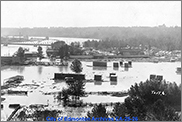 Rossdale and Walterdale became some of Edmonton’s first neighbourhoods and had an eclectic mix of homes, schools, churches, industries, utilities and sports facilities. After a major flood in 1915, the neighbourhoods’ fortunes waned. Investment diminished.
Rossdale and Walterdale became some of Edmonton’s first neighbourhoods and had an eclectic mix of homes, schools, churches, industries, utilities and sports facilities. After a major flood in 1915, the neighbourhoods’ fortunes waned. Investment diminished.
After World War II, municipal policy was to acquire land on the river flats for open space, recreation facilities, and freeways. Homes and businesses were demolished as the City purchased them. The last house in Walterdale, the smaller of the two neighbourhoods, was demolished in the winter of 1966/67 to make way for the Kinsmen Fieldhouse (the first phase of the Kinsmen Sports Centre).
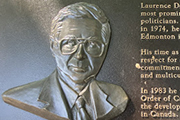 In the 1970s, new residents moved into Rossdale and other surviving valley communities, drawn by proximity to Downtown and natural beauty. They opposed policies that would extinguish their neighbourhoods.
In the 1970s, new residents moved into Rossdale and other surviving valley communities, drawn by proximity to Downtown and natural beauty. They opposed policies that would extinguish their neighbourhoods.
In 1975, Riverdale won the right to be preserved and in 1983, after Laurence Decore was elected mayor, Rossdale, Cloverdale, and Lavigne were protected.
City Council approved a plan for Rossdale’s redevelopment in 1986. The plan called for new houses in South Rossdale, and these were built beginning in the late 1980s. The only direction the plan provided about West Rossdale, however, was that a special study should be done in the future. The planners hadn’t been able to win support for the higher density, mixed-use development that they had proposed during the planning process.


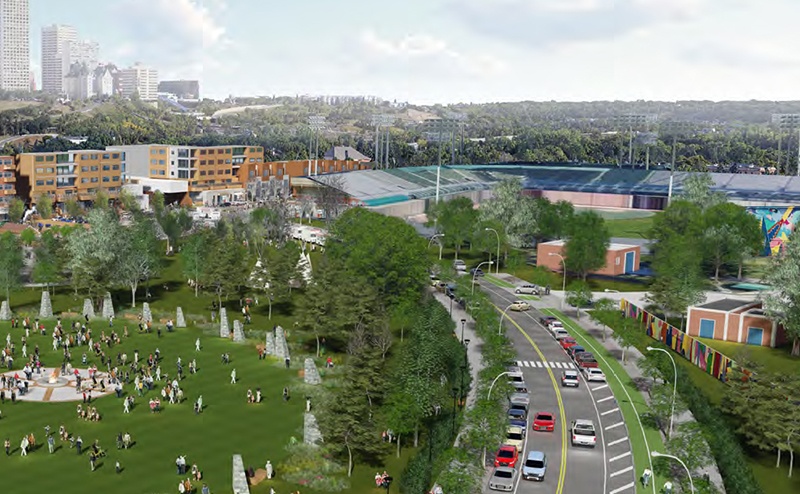 Conceptual Rendering
Conceptual Rendering
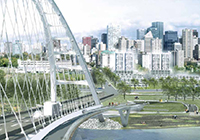 In 2015, City Council adopted a new
In 2015, City Council adopted a new 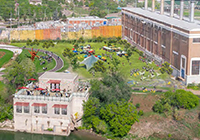 The
The 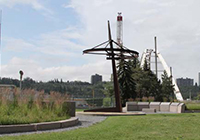 The
The